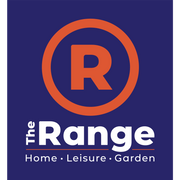Loading bays can be hectic, with people, goods, and machines constantly on the move. When safety isn't prioritised, these areas can quickly become hotspots for injury. Slippery surfaces, worn-out flooring, and heavy foot traffic all increase the risk. It doesn’t matter if it’s outdoors or inside a warehouse – a slip in the wrong place at the wrong time can bring operations to a halt and hurt someone in the process.
That’s where GRP anti-slip sheet panels come into play. Designed to make walking and driving safer, they’re a practical safety fix that works across all types of loading areas. They grip underfoot, stay strong through bad weather, and help stop injuries before they happen. This article looks into how these panels work, what makes them stand out, and why more workplaces are using GRP to keep loading bays safer.
Understanding GRP Anti-Slip Sheet Panels
GRP stands for Glass Reinforced Plastic. It’s a strong and lightweight material made by combining glass fibres with plastic resin. The outcome is a highly durable surface that doesn’t rot, won’t rust, and stays grippy even when wet. Industrial sites, warehouses, and public transport areas often use GRP because it holds up in tough environments.
Here are a few reasons GRP panels are a smart choice:
- Sturdy yet lightweight: Much lighter than concrete or steel, but still tough enough for heavy loads and foot traffic.
- Corrosion resistant: They won’t rust or weaken, even in places exposed to water, grit, or chemicals.
- Low maintenance: Once installed, they’ll need minimal care. GRP holds its colour and texture without cracking or flaking.
- Customisable: Panels can be cut to size, so they work for both tight warehouse corners and wide outdoor loading zones.
- Built-in grip: The textured anti-slip finish is part of the panel itself, so it doesn’t peel or wear off like some other treatments.
Many older setups still rely on painted grips or surface tapes, but these wear out fast. GRP panels offer a solid grip that sticks around through all seasons. Because the grip is formed into the panel, there’s less chance of it failing when it’s most needed.
One warehouse we visited had ongoing issues with steel ramps becoming slippery during heavy rain. They replaced key sections with GRP panels and noticed the difference straight away. Even forklift operators, who pass these areas dozens of times a shift, said it gave them more confidence to move safely under pressure.
How GRP Panels Enhance Loading Bay Safety
On dry days, a loading bay might not look like a danger zone. But one unexpected spill, one soggy boot, or one cracked tile can quickly lead to a fall. GRP panels protect against that with solid surface traction and smart design.
Here's how they make loading zones safer:
- Better grip for workers: The rough finish on each panel helps reduce slips by gripping footwear properly. Workers feel more stable when carrying loads or rushing between tasks.
- Machinery traction: Pallet jacks, forklifts and similar vehicles need floor grip too. GRP’s textured surface helps them move securely without skidding.
- Weather-resistant: GRP doesn’t get slick when it rains and copes well with frost, sleet or mild chemical exposure. Surfaces stay usable when other areas might need cordoning off.
- Long-lasting performance: Unlike coatings or tapes that crack or peel, GRP panels maintain their function. That reduces the need for constant repair work or temporary fixes.
When workers don’t have to second-guess their footing, they can focus more on the job. Reliable flooring also speeds up processes by cutting out delays caused by unsafe walk paths or blocked off zones.
Steps to Effectively Install GRP Anti-Slip Sheet Panels
Fitting GRP anti-slip sheet panels is straightforward, but doing it right means taking each step seriously—especially around cleaning and securing. Rushing through installation can lead to lifted edges and uneven joints later down the line.
Here’s a step-by-step look at how most installs work:
1. Clean and inspect the surface
Sweep away dust, grime and loose materials. Use degreasers if oil or chemical residue is present. Any damaged areas should be repaired or levelled ahead of time. Start with a dry, even surface.
2. Measure and cut the panels
GRP sheets can be trimmed using tools like jigsaws or circular saws. Double-check measurements across different parts of the bay to factor in angles, corners and step areas.
3. Position panels for a dry fit
Lay the panels out without fixing them first. This helps confirm the fit and avoids errors during final placement. Adjust as needed.
4. Apply adhesive and/or mechanical fixings
Use construction-grade adhesive suited for GRP. In high-traffic bays, pair it with screws or rivets for added hold. Even spacing during layout prevents warping or shifting.
5. Tidy up joints or edges
Where two panels meet, make sure the line is flush. Add trim or sealant to exposed edges for extra safety and to stop water from seeping underneath.
6. Allow time for the adhesive to cure
Most adhesives need a setting period. Avoid rolling equipment across new panels until they’ve bonded. After curing, inspect again and check for movement.
Once in place, GRP needs little upkeep beyond basic cleaning. A brush or hose is usually enough unless there’s a specific spill or impact. If a panel ever cracks or wears down, it can be swapped out without tearing up the whole area.
Real-World Applications and Success Stories
GRP anti-slip panels are helping workplaces across different sectors build safer environments. Transport hubs, food producers, repair depots, and industrial distribution centres are just a few examples.
One packaging plant near the coast battled wet flooring every time there was a change in wind direction. Ocean mist and spilled liquids made their loading spots unpredictable. They had tried textured paints and treated carpets, but these wore out or went mouldy. Since switching to GRP panels, they’ve tracked fewer incidents and had no need for temp safety mats. Their site manager said staff seemed more alert and quicker on their feet, knowing they weren't likely to skid moving between vans and storage.
The best part? These changes didn’t involve shutting operations for weeks. Because the panels could be installed in sections, the team kept working while upgrades were made.
Whether indoors or out, it’s becoming clear that GRP is a strong long-term option for improving floor safety without extra layers of fuss.
Sturdy Solutions That Build Confidence
It’s easy to underestimate how much is riding on a safe floor—until you’ve experienced the cost of a slip, lost time from injuries, or scrambled to fix flooring that failed just when things got busy. GRP anti-slip panels bring a no-nonsense layer of security to loading bays, whether it’s a huge logistics hub or a single-point delivery site.
Making these key areas safer can lead to smoother workdays, less downtime, and a more confident team overall. Fewer risks on the floor often means fewer interruptions above it. With the right surface underfoot, everyone from forklift drivers to box handlers feels more focused and ready to move. That small change on the ground floor can do a lot to support day-to-day flow and worker wellbeing.
If you're looking to boost safety in busy work zones, adding the right floor support can make a huge difference. Explore how GRP anti-slip sheet panels can help create safer, more efficient loading areas by improving grip for both foot and vehicle traffic. At Slips Away, we’re here to help you make every step more secure.














